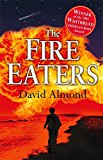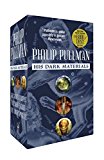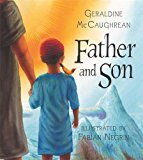I was recently asked ‘what makes a good children’s book’? My answer was it’s the same combination of factors that make any good book – is it original, well written and with the intended reader in mind? Of course, unlike adult books, you also have to consider the illustrations, but if children’s books are going to fail it is more likely on the words than the pictures. As a mother I’ve read far too many beautifully illustrated books to my daughter that I’ve had to put in my own words because the existing text doesn’t do the job properly. It’s a scandal. With that rant over, let’s look at some factors that adults should look for when buying a book for a child.
Beware of marketing
The best books for children are not always found on the big flashy displays. Not to say that everything on the front-of-shop racks are poorly written, but don’t just grab the first thing you see in your lunch hour. These books are usually character driven spin-offs from television shows or toy product lines. They’ve got a massive advertising budget behind them and trade on ‘product recognition’. This does not necessarily mean they are well-written books. I was shocked to read some Thomas the Tank Engine Books the other day. They were quite simply film stills with captions, taken directly from the TV show. The original Thomas books by the Rev WV Awdry were wonderfully conceived and written, but since the TV franchise took over in 2002 (note they are now Thomas and Friends) the quality has gone downhill like a runaway train! So take some time and delve a bit deeper into your local bookshop.
Assuming you’ve got past the glitzy displays and into the dustier depths of the shop, what do you look for?
A good story
Quite simply, is it fun to read? Is the plot well constructed with a good beginning, middle and end? Are the characters engaging and realistic? Does the plot line deal with emotional issues without being too soppy? Does it dare to be daring? The other day I was delighted to read Pigs by Robert Munsch (illustrations Michael Martchenko). This is the story of a little American girl who opens a pig pen and lets the swine loose on the town. While I feel the book is a bit wordy and could do with a better balance between words and pictures (and less repetition), the story itself is brilliant! It’s funny, engaging and slightly ‘naughty’ – which children love. For older children, books that are often snubbed by the literary critics, are the Artemis Fowl series by Eoin Colfer. They’re subtitled ‘Die Hard With Fairies’ and the first in the series is simply one of the best reads I’ve had in years.
Quality writing
 It’s amazing how poor the writing in children’s books can be. Just because children are not that good at reading yet, does not mean publishers can get away with producing shoddy material. Read a book before you buy it – or at least sample some good chunks of it. Good literature doesn’t have to be boring. Anything by David Almond is guaranteed to entertain and challenge on an intellectual level. His first children’s book is Skellig about an angel in a garden shed, but my favourite is The Fire Eaters about a little boy in the 1960s who befriends a carnival freak.
It’s amazing how poor the writing in children’s books can be. Just because children are not that good at reading yet, does not mean publishers can get away with producing shoddy material. Read a book before you buy it – or at least sample some good chunks of it. Good literature doesn’t have to be boring. Anything by David Almond is guaranteed to entertain and challenge on an intellectual level. His first children’s book is Skellig about an angel in a garden shed, but my favourite is The Fire Eaters about a little boy in the 1960s who befriends a carnival freak.
Another beautiful writer is Eva Ibbotson. I loved Journey to the River Sea and The Star of Kazan. Ibbotson has the rare talent of knowing how to couple rich, atmospheric writing with a rolicking plot. She deals with historical and fantasy themes.
For a more contemporay, dare I say, tweenybopper, writer, Jacqueline Wilson is one of my favourites. She’s often maligned for being too gritty, but, in my opinion, she handles the darker side of childhood with sensitivity and an unflinching eye. I would recommend The Illustrated Mum about a young girl dealing with her mother’s mental health issues. It is a fine example of good writing and a respectful treatment of a difficult subject.
All of these writers have either been nominated or won major awards.
Awards
For the confused adult buyer with not much time on their hands, an award nomination or win, is often a good guide. The major awards for children’s writing are the Carnegie Medal, the Kate Greenaway, the Guardian and the Whitebread in the UK. The Smarties Award, unlike the others, is voted for by children themselves, so is a good measure of what young readers themselves like to read. In America, the John Newberry Medal and the Caldecott (for picture books). Canada and Australia also have prizes (see list above) as does the Christian market in the UK and the USA.
A lack of preachiness
 This applies to any book with a ‘message’; not just a Christian message. We need to respect young readers and their right to be able to make up their own minds about issues. Writers can present a positive viewpoint without resorting to brainwashing. The jury is still out in my mind about the most popular children’s series of the last decade: Philip Pulman’s His Dark Materials trilogy (Northern Lights, The Subtle Knife and The Amber Spyglass). While the books certainly fulfil all of the above criteria of good children’s literature (and I enjoyed reading them), his overtly evangelistic atheism borders at times on a preachiness that would be condemned in a Christian book. And at least most Christian books are found in Christian bookshops so readers know what they’re getting. On the other hand, if more Christian books were as well written as Pulman’s they could compete on a more equal footing. (Was that a rotten tomato?). For a more in-depth discussion of spiritual themes in children’s literature see my article ‘Once Upon a Time.’
This applies to any book with a ‘message’; not just a Christian message. We need to respect young readers and their right to be able to make up their own minds about issues. Writers can present a positive viewpoint without resorting to brainwashing. The jury is still out in my mind about the most popular children’s series of the last decade: Philip Pulman’s His Dark Materials trilogy (Northern Lights, The Subtle Knife and The Amber Spyglass). While the books certainly fulfil all of the above criteria of good children’s literature (and I enjoyed reading them), his overtly evangelistic atheism borders at times on a preachiness that would be condemned in a Christian book. And at least most Christian books are found in Christian bookshops so readers know what they’re getting. On the other hand, if more Christian books were as well written as Pulman’s they could compete on a more equal footing. (Was that a rotten tomato?). For a more in-depth discussion of spiritual themes in children’s literature see my article ‘Once Upon a Time.’
Quality illustrations
I toyed with putting this point first on the list, as illustrations are what makes children’s books magical. But I fear that many adult buyers are wooed simply by pretty pictures. Do the pictures complement the text and vice versa? Does the text over-clutter the illustrations or do the two elements work together to tell the story? On the other hand, beware of too much visual detail in stories for younger children. Simpler lines and bolder colours may not be aesthetically pleasing to an adult eye, but they are easier to engage with for a child under four. From four upwards the illustrations may be more sumptuous. However, this trend may be reversed as children approach eight or nine where the ‘cooler’ minimalist, cartoon-style illustrations are more in vogue. If you’re interested in illustration for children’s books, I recommend Illustrating Children’s Books by Martin Salisbury. In a later article I intend to discuss the relationship between the illustrator and writer in children’s picture books.
Original concept and presentation
 There is a fine line between original presentation and a gimmick. Let’s admit it, it’s a challenge to find a different way to tell an age-old story, particularly at Christmas. But with that season of joyful spending coming up, I would recommend What’s Christmas? by Alexa Tewkesbury. This gets my vote for the best Christmas book of the season. It is an endearing tale challenging the traditional ways of telling the Christmas story. The beautifully constructed text is matched by charming illustrations and a little bit of subversive humour (look out for the Puffin Guide to the North Pole!).
There is a fine line between original presentation and a gimmick. Let’s admit it, it’s a challenge to find a different way to tell an age-old story, particularly at Christmas. But with that season of joyful spending coming up, I would recommend What’s Christmas? by Alexa Tewkesbury. This gets my vote for the best Christmas book of the season. It is an endearing tale challenging the traditional ways of telling the Christmas story. The beautifully constructed text is matched by charming illustrations and a little bit of subversive humour (look out for the Puffin Guide to the North Pole!).
Another recommendation is Father and Son. The poetic beauty of Geraldine McCaughrean’s words with Fabian Negrin’s exquisite illustrations, make this a book to be treasured. Written from Joseph’s point of view, Jesus’ earthly father contemplates the enormity of the task before him. This is a book that will touch the heart of every parent while inspiring awe in every child. Why didn’t I vote it ‘book of the season’? Simply because I felt it was written first for an adult and then for a child.
Age appropriateness
This applies to both subject, telling and presentation. Young children can be rough with books. Will your choice stand up to Junior’s attentions or should you put it away for another year? Are the illustrations and the text suitable for the age of the child you are buying for? Is this really just a clever, tongue-in-cheek tale for adults or an excuse for an adult flight of fancy? Is the child first in the author’s mind or the adult? A good book will balance the two (so that parents don’t get bored when reading to their sprogs) but children’s books should be for children first, adults second. When choosing a book for a particular child, beware that publishers rarely print an age guide on the covers. This is because some seven-year-olds are reading Harry Potter and some 12-year-olds can barely manage Winnie the Pooh! To try and help confused adult buyers, retailers have different shelves for different age groups, but this varies from shop to shop. If in doubt, ask a parent.
Old books aren’t always ‘timeless’
I know it’s hard to accept, but just because you enjoyed a book as a child, it doesn’t make it timeless. Nor does it make it a classic. The great children’s classics of the last century or so (Black Beauty, The Water Babies, Little Women etc) are quite difficult for modern children to get into. Some children will grow into the classics, some won’t. Don’t force the issue. And quite simply, not all ‘old’ books are classics! The Nancy Drew series, which I loved as a child, makes me feel ill when I try to read it now. Great stories, yes, but so badly written. The Famous Five and Secret Seven are also a bit long in the tooth. Again, they’re good stories, but the ginger-beer drinking days of yore are more likely just to bore. Fantasy books, such as Winnie the Pooh and Alice in Wonderland have fared better, perhaps because their make-believe-worlds are outside of time and harder to date.
For some excellent material on children’s books visit the Centre for the Children’s Book website or their recommendations page.

hmm, an impressive list indeed. I know what you mean about the His Dark Materials trilogy, it does get a bit preachy, and I completely agree with your comment that if it was a Christian book it would be condemned for being too proselytising…it’s annoying on two counts – one because it falls in to that Dawkins/Hitchens trap of being so aggressively negative about religion per se that you get the feeling that their atheism is a substitute religion, the passion they put into it (should clarify that I am an atheist too, by the way). Secondly because it gets in the way of a really good book – I thought that Northern Lights was excellent, a completely spellbinding adventure, and though I liked the other two, by book three I did think it had kind of got carried away with it’s own point of view and the drama suffered…
Hi Duncan. Couldn’t agree with you more about the ‘substitute religion’ thing. Alistair McGrath deals with that very well in his book the Dawkins Delusion http://www.amazon.co.uk/Dawkins-Delusion-Atheist-Fundamentalism-Denial/dp/0281059276
It’s great to hear an atheist like yourself acknowledging it.
Back to Pullman though, he really is a master story teller and craftsman – what that man does with a semi-colon makes me quiver! Have you read any of his other books? I can recommend The Ruby and the Smoke and the Butterfly Tatoo.
Thanks for visiting. Hope to hear from you again.
Fiona
Pingback: Talking Animal Stories - Wind in the Willows MK II? at The Crafty Writer
I know what you mean about illustrations being wonderful, but not being able to carry a picture book. The text matters, a lot. Our family has a wide range of books, and it’s interesting how a few stand out from the others. Of course we have character books, some are very painful to read. We also have some that are wonderful and enjoyable for both me and the kids! (And I’ve started raving about them in our blog.)
Fiona,
Your commentary on what makes a good children’s book, particularly a Christian children’s book, is of great interest to me. I have recently written and illustrated 2 such books. I wrote these stories because there is such a lack of uplifting and encouraging entertainment in our country.
I was wondering if you would visit my web site www.postikit.com and give me your opinion of my stories.
The first is called “Mrs. Postikit and the Waffle Emergencies” and can be read here
http://www.postikit.com/waffle/waffle.html
The other is called “Mr. Postikit and the Mouse in the Wall” and can be read here:
http://www.postikit.com/mouse/mouse.html
Thanks.
Stephen
Hi Stephen,
I read and critique children’s books and stories to make my living – as well as writing and editing them. If you would like my professional opinion please visit my services page http://www.thecraftywriter.com/services/#critiquing
Good luck with the books and thanks for visiting,
Fiona
I agree! Thanks for the sharing! There’s a great one my kids love that I found at wwww.funtasypublications.com about all sorts of adventures. It reminds me of when I was a kid and used to read Enid Blyton books.
What is the book called Sally? I don’t mind you ‘namedropping’ sites if you’ve got something to add to the discussion.
Sally was talking about “The Book of Funtastic Adventures”
Thanks David. Now we can look out for it.
THANKS AND CONGRATS FOR YOUR GOOD WORK
If one were to write a children’s book on a little boy’s mother dying, is it a good or bad idea?
Hi Nicole, there are books about death and loss but they need to be very subtly handled. Rather than the death of the parent being the climax of the book, let the parent die fairly early and let the book then be about the child coming to terms and ‘recovery’ from the loss. That way there’s a chance for a happy ending. Jacqueline Wilson deals with loss very well in her books. Another book that deals with bereavement beautifully is ‘Grandpa’ by John Burningham. Here are some other children’s books about bereavement http://www.devonsls.org.uk/booklists/protectedbooklists/dsls-booklists-bereavement.pdf Good luck with it!
Pingback: What makes a good picture book? |
I found this really helpful. I am taking a class called Children’s Lit. & I am working on a project & I had 2 find out what makes a good children’s book. Thanks a lot.
-Kristina
Glad it helped.
You’re welcome Nicole. Thanks for saying thanks.
Pingback: Helpful article – What Makes a Good Children’s Book « Victoria Abigail Scott
Fantastic article, I am just setting off into creative writing and I was considering children’s stories so I find this particularly helpful.thank you
You’re most welcome. Good luck with your writing.